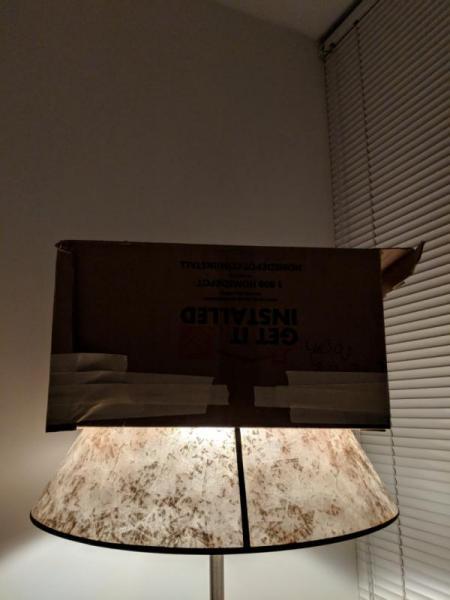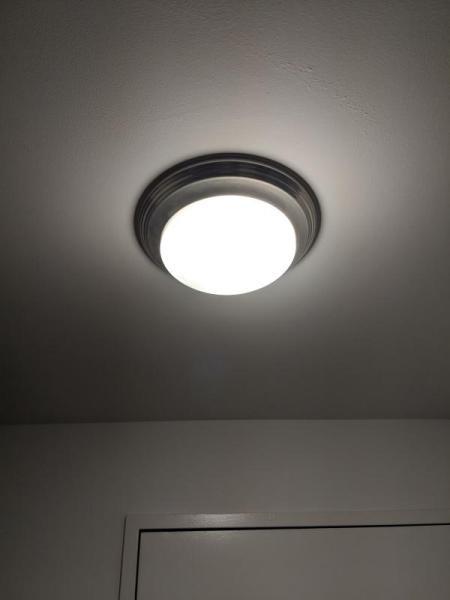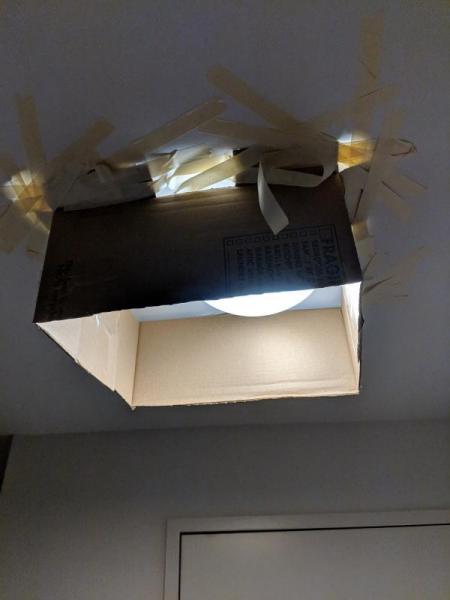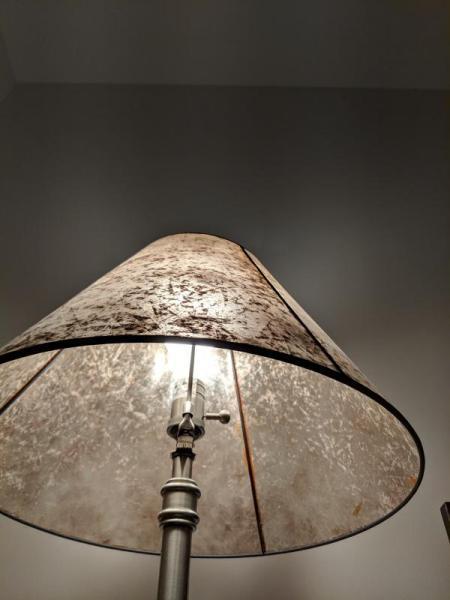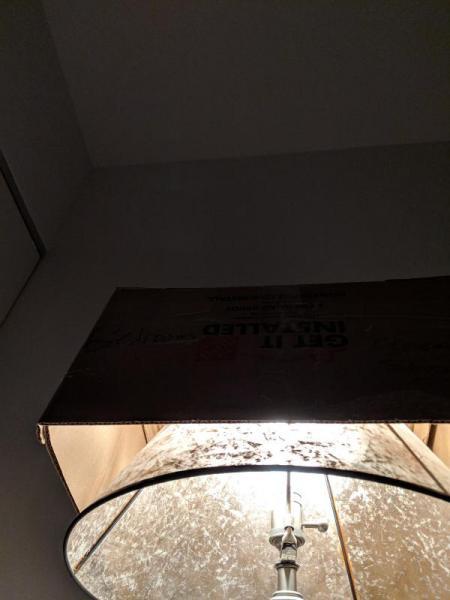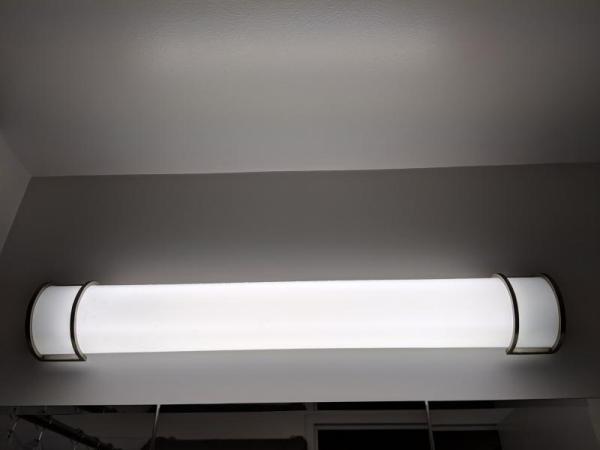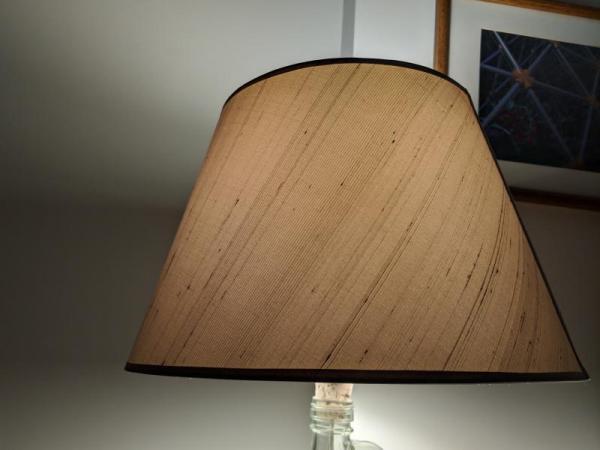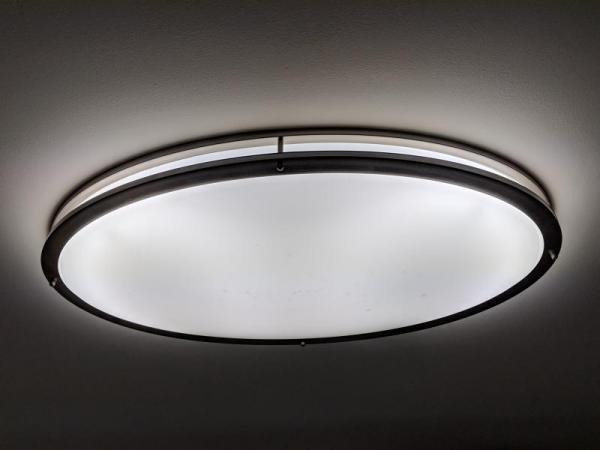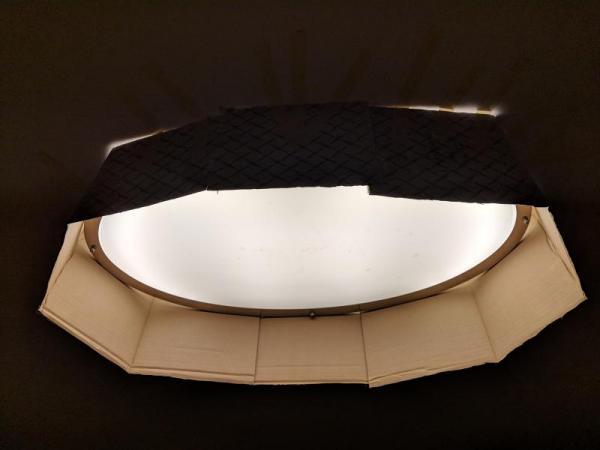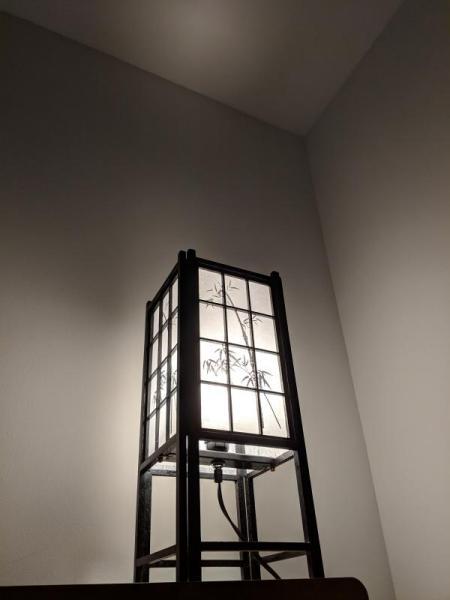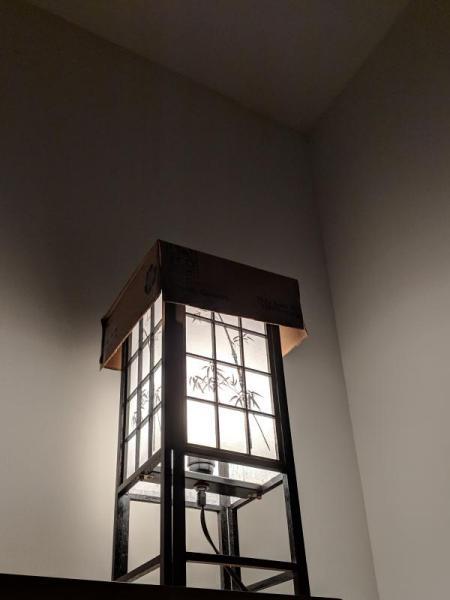Lighting Design
A major cause of light pollution is outdoor lighting that emits light skyward because of light sources that are not shielded. A typical bare light source will emit light in all directions. Light that is emitted straight up into the sky rarely serves any purpose but contributes to the light pollution that prevents us from seeing the stars. Putting a cover of some kind above a light source or angling them down towards the ground can keep this from happening without noticeably diminishing its usefulness.
To explore this aspect of light pollution I began a 7 day constraint based daily practice to challenge myself to learn more about lighting design. I have 7 lights in my apartment; can I modify them so that all light is emitted down towards the floor? At night when I turn the on lights in my apartment my ceiling is fully illuminated. Light hitting the ceiling doesn't help me function or perform any tasks. That light is effectively wasted. This is analogous to the lighting found in cities where light is projected upwards towards the sky, not meaningfully helping humans on the ground while also contributing to light pollution.
Here's the challenge I posed for myself: Can I alter the lights in my apartment in such a way that I reduce the illumination of the ceiling without also limiting my ability to live my life in my apartment?
On each of seven days I used cardboard to modify one light fixture in my apartment. I observed the illumination of the ceiling before and after each light modification and also noted any impact on my behavior or my ability to see.
Note that Illuminance is a measure of how much light is illuminating a surface and is a quantifiable term. To be rigorous I measured illumination with a light meter using an app installed on my phone. All measurements are in Lux (lx), with 10 lx equal to 1 foot-candle. One foot-candle is the illumination provided by 1 candle on a surface 1 foot way.
Day 1
My first light source is a standing lamp in my bedroom with a 100 Watt incandescent bulb. The lamp illuminates the ceiling above it at 34 lx and is reduced to 4 lx with the modifications. This modification took quite a bit of time because it was my first one.
Generally I don't use this light very much so this modification had no impact on my behavior.
Day 2
The second light source is what I believe to be a LED light with plastic cover on the ceiling near my front door. For this light I measured the illumination of the ceiling around the outside of the lamp about 6-12 inches away. The previous ceiling illumination of 70 lx was reduced to 8 lx.
This was the most difficult because I had to securely tape cardboard to the ceiling with masking tape.
This modification was noticeable compared to what I was accustomed to but did not limit my ability to perform any regular activities.
Day 3
The third light source is a 70 Watt incandescent bulb in my bedroom. The ceiling illumination was previously 36 lx and was reduced to 4 lx with the modifications.
This modification was noticeable and made it somewhat more difficult for me to function in this room. Part of the issue is that the light is positioned on a nightstand and is therefore already close to the ground. Since I am much taller than the height of the bulb I found this to be a bit of a nuisance. I found that I started more frequently relying on the standing lamp modified on Day 1.
Day 4
The fourth light source is the fluorescent lighting in my bathroom. This light illuminates the ceiling at 788 lx. With a simple cardboard cover I was able to reduce that to 46 lx.
This modification was negligible and did not affect my ability to utilize that room.
Unfortunately this modification fell down after a day or two. I made a second modification for it on day 6. This modified light illuminated the ceiling at 73 lx.
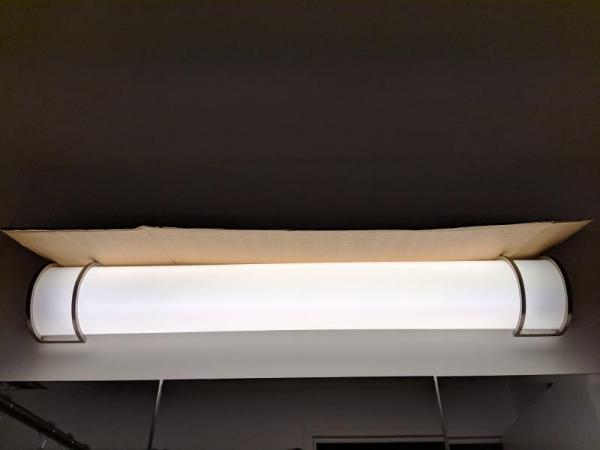
Day 5
The fifth light source is a 100 Watt incandescent bulb in my living room. This is a lamp I made myself out of an empty olive bottle several years ago as part of an ITP Camp project. The lamp illuminates the ceiling at 34 lx, but with the modifications, 3 lx.
This light is positioned on an end table and is again close to the ground. The impact was noticeable but did not affect my behavior.
Day 6
The sixth light source is fluorescent lighting on the ceiling of my kitchen. The illumination of the ceiling 6-12 inches away from the light was 110 lx before the modification and 19 lx after.
My apartment has an open kitchen design and I regularly depend on the light from this ceiling fixture to illuminate the front area of my living room. This modification greatly reduced the illumination in the living room, requiring me to regularly use the light on my desk. That light was modified on Day 7. Normally I rarely use that light but with this modification it became necessary.
Day 7
The seventh and final light source is a 60 Watt incandescent bulb sitting on a shelf above my desk. The illumination above the lamp was 28 lx before the modification and 11 lx after.
I started using this light more frequently because of the modification of my kitchen light. This small light was able to illuminate my desk and help me work just as effectively as the kitchen light normally would.
All of the modified light fixtures remained modified for the remainder of the seven day period.
For all but one light I was able to reduce the ceiling illumination by at least 80-90%. This is encouraging and is more than I expected. Lighting design that angles light down and has proper shielding can greatly reduce skyward illumination and light pollution.
This experiment also identified the importance of lighting positioning, which isn't something I thought about in advance. Using the light in my kitchen to illuminate my living room is sub-optimal. Similarly, positioning outdoor lighting closer to the locations that actually need illumination is critical.
As a result of this experiment it has become clear to me that with a little bit of thoughtful lighting design and positioning one can significantly reduce an area's light pollution contribution without also significantly impinging on the needs of the humans utilizing the space.

